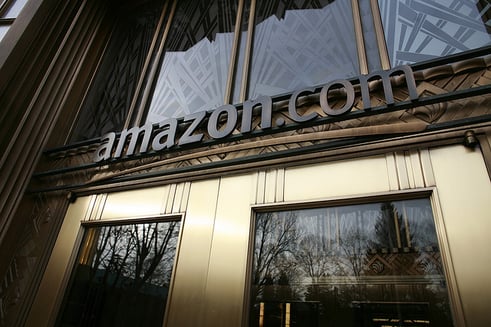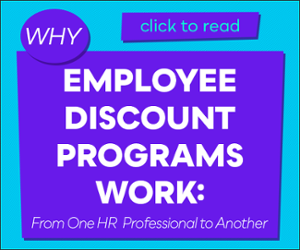 Much has been made in the past few days about the New York Times’ profile of Amazon’s workplace culture and policies. In the profile, former Amazon staffers talk about a company driven by a cutthroat culture, where employees are working 80 hours a week and often being punished for illnesses.
Much has been made in the past few days about the New York Times’ profile of Amazon’s workplace culture and policies. In the profile, former Amazon staffers talk about a company driven by a cutthroat culture, where employees are working 80 hours a week and often being punished for illnesses.
It’s an insightful, yet damning read. To their credit, Amazon has distanced themselves from the worst claims, but by and large, they’re unapologetic about their office environment.
There’s a lot to be learned from the article - both in terms of what not to do as well as some great management insights. If you’re a company interested in having a committed, engaged workforce that delivers amazing service to customers, then these are the four biggest takeaways:
1. Expectations are necessary. Innovation seems to happen either through absolute necessity, inspiration, or coercion. Companies with a hard-driving culture such as Amazon’s have created some amazing things. They place people in a meat grinder, but there are (usually) great rewards for those who can thrive in such an environment.
The problem is that culture requires a lot of investment into personnel and recruiting. But, it serves as a reminder that expectations are necessary. Just because many employees want a lax atmosphere doesn’t mean there shouldn’t be clear and ambitious expectations, and accountability when those expectations aren’t met. The line to be drawn is a “win at all costs” mentality that loses sight of the individuals and their life expectations.
2 Customer focus isn’t congruent with employee focus. There’s a tendency to think of customer-centric companies as also being very employee-friendly. While that’s true for many brands, Amazon serves as a reminder that some companies push their employees to the limits in order to bring innovation to customers.
However, as evidenced by the growing wave of expanded benefits and corporate perks, companies are waking up to the notion that positively engaged employees means more engaged customers. And as Amazon has surely discovered, actively disengaged employees can hurt the bottom line (in part by doing things such as speaking to a reporter for a national publication).
The same investment used to constantly recruit and churn could be used to engage, retain and develop. Millennials in particular prefer a workplace where they can collaborate and mingle, which can also have benefits for the customer.
3. Know and share brand values. One part of the article that every company can learn from is the discussion of Amazon’s values.
The result was the leadership principles, the articles of faith that describe the way Amazonians should act. In contrast to companies where declarations about their philosophy amount to vague platitudes, Amazon has rules that are part of its daily language and rituals, used in hiring, cited at meetings and quoted in food-truck lines at lunchtime. Some Amazonians say they teach them to their children.
The guidelines conjure an empire of elite workers (principle No. 5: “Hire and develop the best”) who hold one another to towering expectations and are liberated from the forces — red tape, office politics — that keep them from delivering their utmost. Employees are to exhibit “ownership” (No. 2), or mastery of every element of their businesses, and “dive deep,” (No. 12) or find the underlying ideas that can fix problems or identify new services before shoppers even ask for them.
While it doesn’t excuse some of the behavior discussed in the article, Amazon benefits from having these principles outlined in clear terms. Employees who say their organizational values are “known and understood” are 51 times more likely to be fully engaged than an employee who responds that their organization does not have values that are known and understood.
4. Balance is still important. This isn’t just work/life balance - it’s about a balance of employees and personalities. A management team full of alphas is either going to surround themselves with lackeys; or have constant clashes with other alphas. This can produce high results, but also high churn.
50% of US adults have left a job to get away from a manager. If employee retention is your foal, hire for personality and develop skill.
As for sheer work/life balance, go with the research: performance diminishes the further beyond 40 hours an employee pushes. Employees who take all their vacation time - and truly unplug - are going to be more productive overall. Encourage your team to disconnect when possible, while also maintaining ownership in their roles.
Welcome to the Jungle
While Amazon’s work culture probably doesn’t match yours, it’s the path they’ve chosen. To the end-consumer, it works: we can get a cheap package on our doorstep in two days with free shipping. If you live in some urban areas, you can get an item within minutes of ordering it.
It’s hard to argue with those results. But the company pays a lot of tolls along the way, in terms of personnel recruitment and turnover. And there’s sure to be more fallout from the article, which has picked up worldwide attention.
You can do it differently. It’s possible to have a high-performing, driven workforce that is also cohesive and comfortable. You can have employees that unplug, or who choose to work during their free time, who are still overachievers.
The most important thing is to know what kind of company you want, and to make that expectation clear from the outset, then hire people that fit that mold. Every company benefits from a clear direction, and the more employees you have that buy in passionately to that direction, the better.
(Amazon image courtesy of Robert Scoble)





